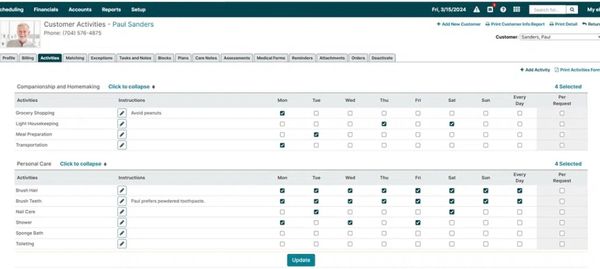Electronic Visit Verification (EVV)
What does EVV stand for?
Electronic Visit Verification, commonly referred to as EVV, is a technology-based system that verifies when and where home health care services are provided. This system is designed to ensure accuracy and reliability in the delivery of care services, particularly for those who are elderly, disabled, or require long-term care.
How does EVV work?
EVV systems work by using technology to record and verify key information about the services provided during a home health care visit. This can be done through various methods, including mobile applications, landline telephones, and fixed devices installed in the patient's home.
When a care provider arrives at a patient's home, they check-in using the EVV system, which records the time, date, and location of the visit. The same process is repeated when the visit ends. The system then transmits this information to a central database for verification and billing purposes.
What are the benefits of EVV?
EVV offers numerous benefits for both care providers and patients. For providers, it simplifies the process of documenting and verifying services, reducing the risk of errors and fraud. It also provides a reliable record of care, which can be used for quality assurance and compliance purposes.
For patients, EVV ensures that they receive the services they need, when they need them. It also provides a level of transparency and accountability, giving patients and their families peace of mind that their care is being properly managed.
Advanced Care Technology

What Types of EVV Technologies Exist?
Originally, EVV started out as a landline telephony technology that recorded the time called in and out at the client’s home. That method is still widely used today. However, with the advent of smartphones, more and more visits are being verified through smartphones using GPS location. This is by far the fastest-growing method. Also, computers and tablets can be used for verified visits.
Additional technologies include non-smartphone
cell service triangulation, fixed-device check-ins, and now voice-bot check- ins. The non-smartphone method occurs when a caregiver calls through a non-smartphone, and then the cell carriers use the towers to locate where the caregiver is. With a fixed device, some areas don’t have cell service or landlines, so caregivers will scan a barcode, record a number or scan an RFID card to clock in/out.
This website uses cookies.
We use cookies to analyze website traffic and optimize your website experience. By accepting our use of cookies, your data will be aggregated with all other user data.
